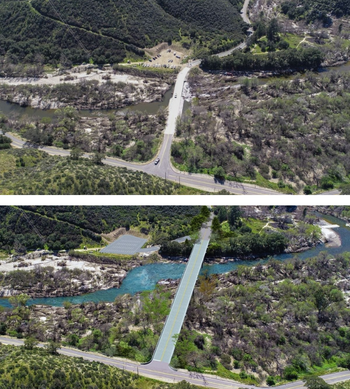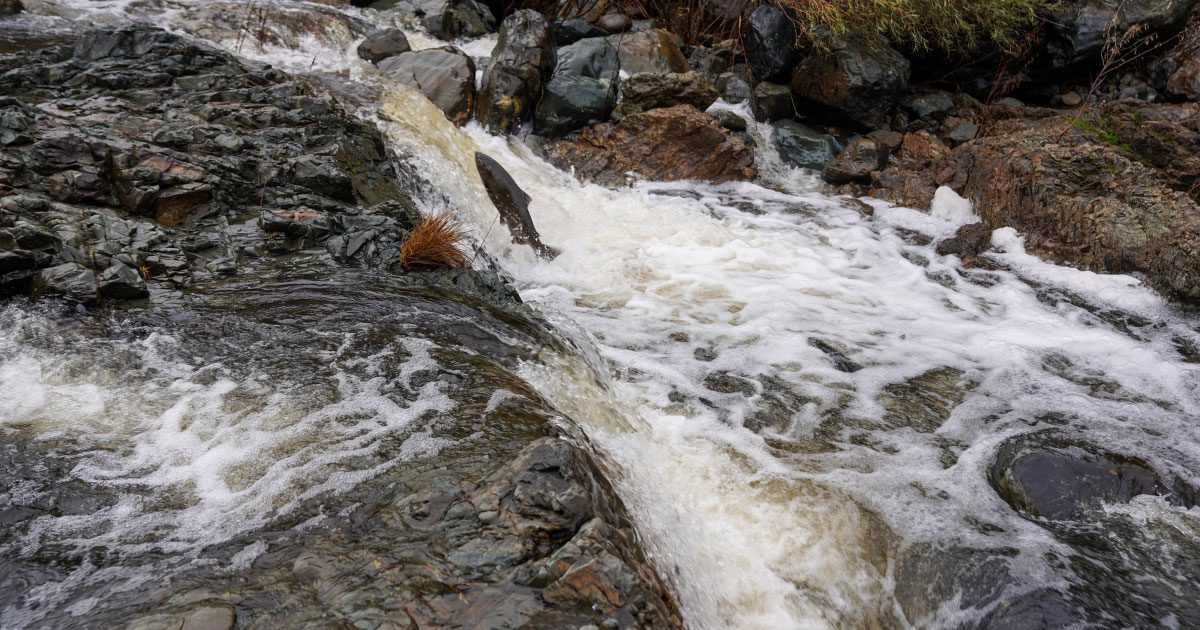Over $13M Recommended for Funding CalTrout-Led Fish Passage Projects
On December 14, NOAA announced recommendations for funding through the Restoring Fish Passage through Barrier Removal grant program. In California, NOAA recommended over $21 million to fund transformational projects across the state that reopen migratory pathways and restore access to healthy habitat for fish. Of that total, NOAA recommended more than $13 million (approximately 60%) for projects led by California Trout, the largest freshwater conservation organization in California. The award recommendation would fund two of CalTrout’s fish passage projects in the Mt. Shasta/Klamath ($9.9 million) and the South Coast ($3.2 million) regions.

Top: Current bridge crossing- unsafe for residents during floods and blocks fish migration. Bottom: Artist rendering of the new bridge replacement.
In the South Coast, NOAA recommended funding for the Sandia Creek Drive Fish Passage Project in San Diego County. This project replaces an aging flood-prone box culvert river crossing with a new steel bridge. We are thrilled that the project is ready to start construction in January, which will provide many benefits to the community. The bridge replacement restores access to 12 miles of upstream habitat for endangered Southern California steelhead, provides flood management for coastal resiliency, and provides public access to a diverse community that regularly visits the nearby Santa Margarita Trail Preserve. The Santa Margarita River is one of the last free flowing rivers in Southern California, and this project highlights the power of landscape-scale coastal resiliency projects that promote recovery of an endangered species while benefitting the community.
NOAA also recommended more than $16 million in funding for 13 tribal priority fish passage projects across the U.S., including a $1.2 million award recommendation to the Round Valley Indian Tribe, a key CalTrout partner in our conservation work in California’s North Coast region. The award will support building tribal capacity to engage in the decommissioning process and dam removal at the Potter Valley Project on the Eel River. The river is a historic tribal source of livelihood, sustenance, and connection to the landscape.
Reconnecting habitat is one of CalTrout’s five Key Initiatives. Dams and barriers block migration upstream to high quality habitat and restrict migration of juvenile fish to the ocean. We are working to remove barriers and get obsolete dams out to give native salmon and steelhead access to the clean, cold water of their native spawning and rearing habitats once again.
Cover photo by Mike Wier.






1 Comment
Hello and good day,
How do we learn about open RFP’s and be a part of any recepient list in the future?
Thank-you,
Darin A. Brenner
AQUA-ENVIRONS Construction LLC